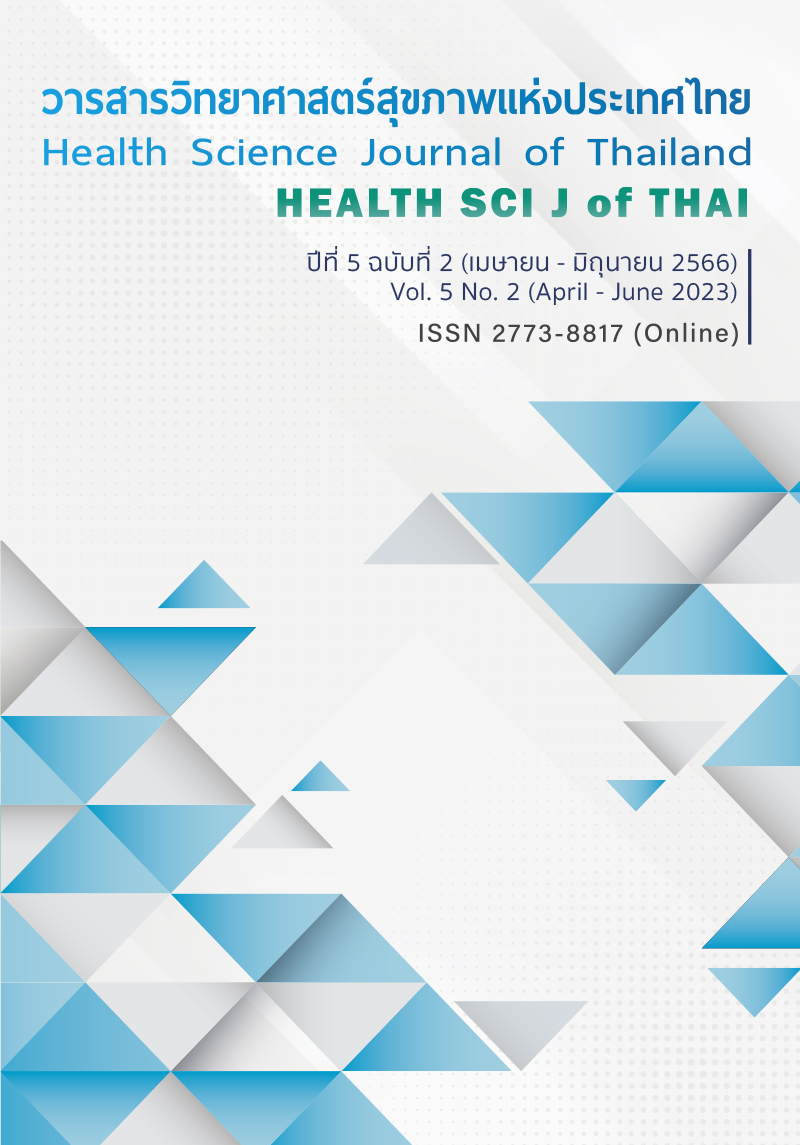Association of ABCD2 Score, and Risk Level with Stroke Event after Transient Ischemic Attack: A Long-Term 12-Months Follow-up
Main Article Content
Abstract
The researchers assessed risk, incident, and prevalence of stroke during the 12-month period after TIA and examined whether the risk level and the ABCD2 score were associated with stroke event. We used retrospective data from TIA Registry, of the total 157 TIA patients who were admitted to a stroke care unit of the 750-bed tertiary care hospital, between December 2011 and September 2015. Data were analyzed using descriptive statistics and Fisher’s exact test. Using ABCD2 to stratify risk level revealed nearly a haft had low risk (47.77%), two-fifth in moderate risk (43.95%), 8.28% in high risk groups, and more than haft there are moderate to high risk (52.23%). Short-term incidence during 2-week, 4-week, and 3-month were 0%, 3.18%, and 3.18%. Long-term incidence during 12-month was 6.40%. Stroke prevalence after TIA at 3 and 12-month were 6.37% and 10.83%. The higher the score and the higher risk level on ABCD2 were significantly associated with the higher incident and prevalence of stroke in short-term. ABCD2 score should be added into routine assessment for patients with TIA to stratify, monitoring, and judgment for any appropriate treatment protocol.
Article Details

This work is licensed under a Creative Commons Attribution-NonCommercial-NoDerivatives 4.0 International License.
References
Easton JD, Saver JL, Albers GW, Alberts MJ, Chaturvedi S, Feldmann E, et al. Definition and evaluation of transient ischemic attack: a scientific statement for healthcare professionals from the American Heart Association/American Stroke Association Stroke Council; Council on Cardiovascular Surgery and Anesthesia; Council on Cardiovascular Radiology and Intervention; Council on Cardiovascular Nursing; and the Interdisciplinary Council on Peripheral Vascular Disease: The American Academy of Neurology affirms the value of this statement as an educational tool for neurologists. Stroke 2009; 40(6): 2276-93.
Giles MF, Rothwell PM. Risk of stroke early-after transient ischemic attack: a systematic review and meta-analysis. Lancet Neurol 2007; 6: 1063-72.
Asimos AW, Johnston AM, Rosamond WD, Price MF, Rose KM, Catellier D, et al. A multicenter evaluation of the ABCD2 scores’s accuracy for predicting early ischemic stroke in admitted patients with transient ischemic attack. Ann Emerg Med 2010; 55(2): 201-10.
Johnston SC, Rothwell PM, Nguyen-Huynh MN, Giles MF, Elkins JS, Bernstein AL, et al. Validation and refinement of scores to predict very early stroke risk after transient ischaemic attack. Lancet 2007; 369: 283-92.
Worakijthamrongchai T, Tantirittisak, T, Hanchaiphiboolkul S. ABCD2 score and risk of stroke in transient ischemic attack (TIA) patients. Bulletin of the Thai stroke society 2012; 11(1): 8-15. (in Thai)
Coull AJ, Lovett JK, Rothwell PM. Population based study of early risk of stroke after transient ischemic attack or minor stroke: implications for public education and organization of services. BMJ 2004; 328: 326-8.
Hill MD, Yiannakoulias N, Jeerakathil T, Tu JV, Svenson LW, Schopflocher DP. The high risk of stroke immediately after transient ischemic attack: a population-based study. Neurology. 2004; 62(11): 2015-20.
Kleindorfer D, Panagos P, Pancioli A, Khoury J, Kissela B, Woo D, et al. Incidence and short-term prognosis of transient ischemic attack in a population-based study. Stroke 2005; 36: 720-3.
Giles MF, Rothwell PM. Systematic review and pooled analysis of published and unpublished validation of the ABCD and ABCD2 transient ischemic attack risk scores. Stroke 2010; 41: 667-73.
Jearanaisilp S. TIA-transient ischemic attack Journal of Thai stroke society 2015; 14(3):153-65. (in Thai)
National Institute for Health and Clinical Excellence. Stroke: diagnosis and initial management of acute stroke and transient ischaemic attack (TIA). London: National Institute for Health and Care Excellence (NICE), 2008.
Kernan WN, Ovbiagele B, Black HR, Bravata DM, Chimowitz MI, Ezekowitz MD, et al. Association Stroke Council, Council on Cardiovascular and Stroke Nursing, Council on Clinical Cardiology, and Council on Peripheral Vascular Disease. Guidelines for the prevention of stroke in patients with stroke and transient ischemic attack: a guideline for healthcare professionals from the American Heart Association/American Stroke Association. Stroke 2014; 45(7): 2160-236.
Tyrrell P, Swain S, Rudd A. Diagnosis and initial management of transient ischaemic attack. London: Royal College of Physician, 2010.
Rothwell PM, Giles MF, Flossmann E, Lovelock CE, Redgrave JN, Warlow CP, Mehta Z. A simple score (ABCD) to identify individuals at high early risk of stroke after transient ischaemic attack. Lancet 2005; 366: 29-36.
Coutts SB, Eliasziw M, Hill MD, Scott JN, Subramaniam S, Buchan AM, et al. An improved scoring system for identifying patients at high early risk of stroke and functional impairment after an acute transient ischemic attack or minor stroke. Int J Stroke. 2008; 3(1): 3-10.
Tsivgoulis G, Spengo K, Manta P, Karandreas N, Zambelis T, Zakopoules N, et al. Validating of the ABCD score in identifying individuals at high early risk of stroke after a transient ischemic attack: a hospital-based case series study. Stroke 2006; 37: 2892-7.
Cucchiara BL, Messe ST, Taylor RA, Pacelli J, Maus D, Shah Q, et al. Is ABCD score useful for risk stratification of patients with acute transient ischemic attack? Stroke 2006; 37: 1710-4.
Dharmasaroja P. Prevalence of extracranial carotid stenosis in Thai ischemic stroke/TIA patients. J Neuro Sci 2008; 269(1-2): 92-5.


